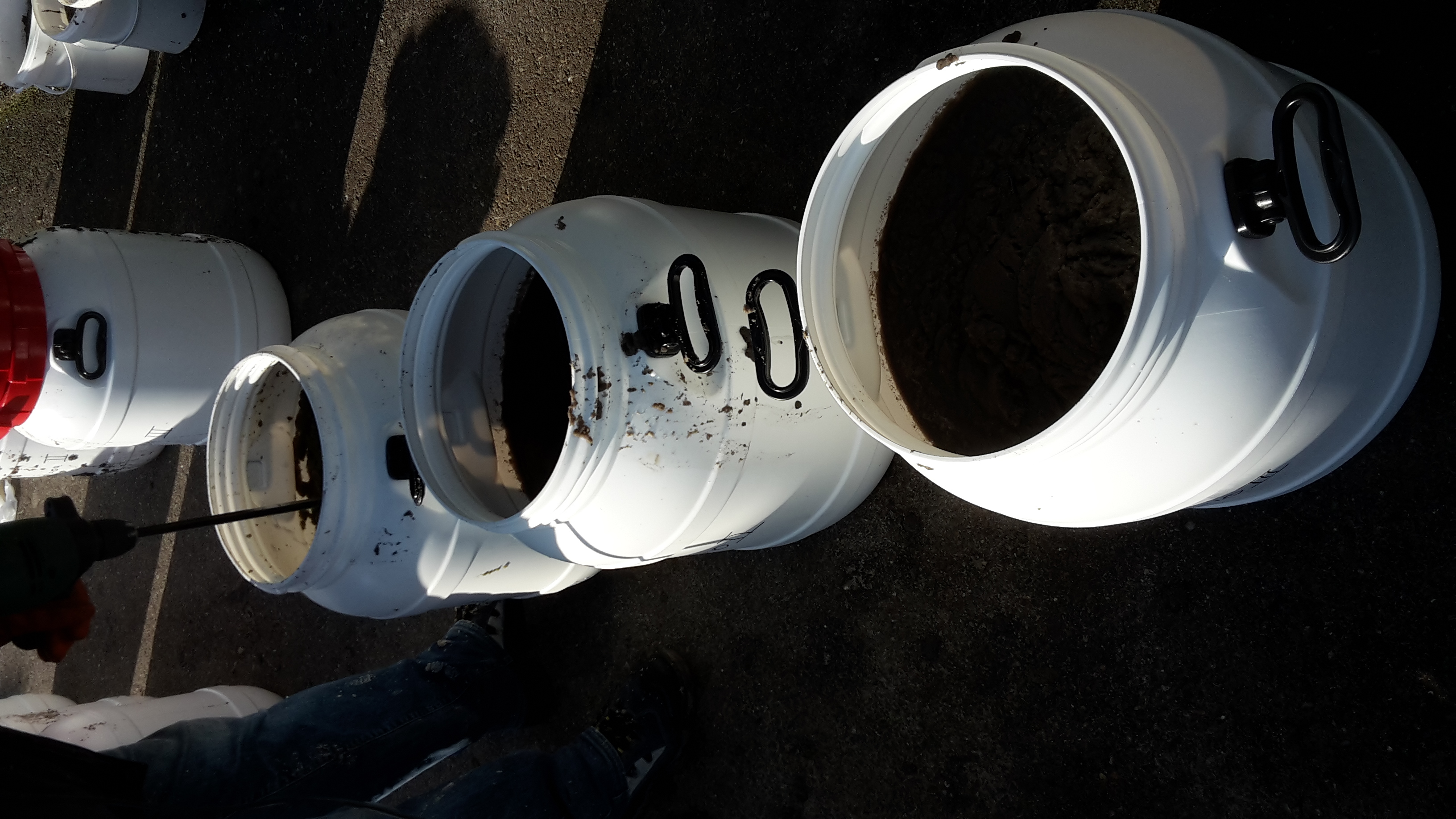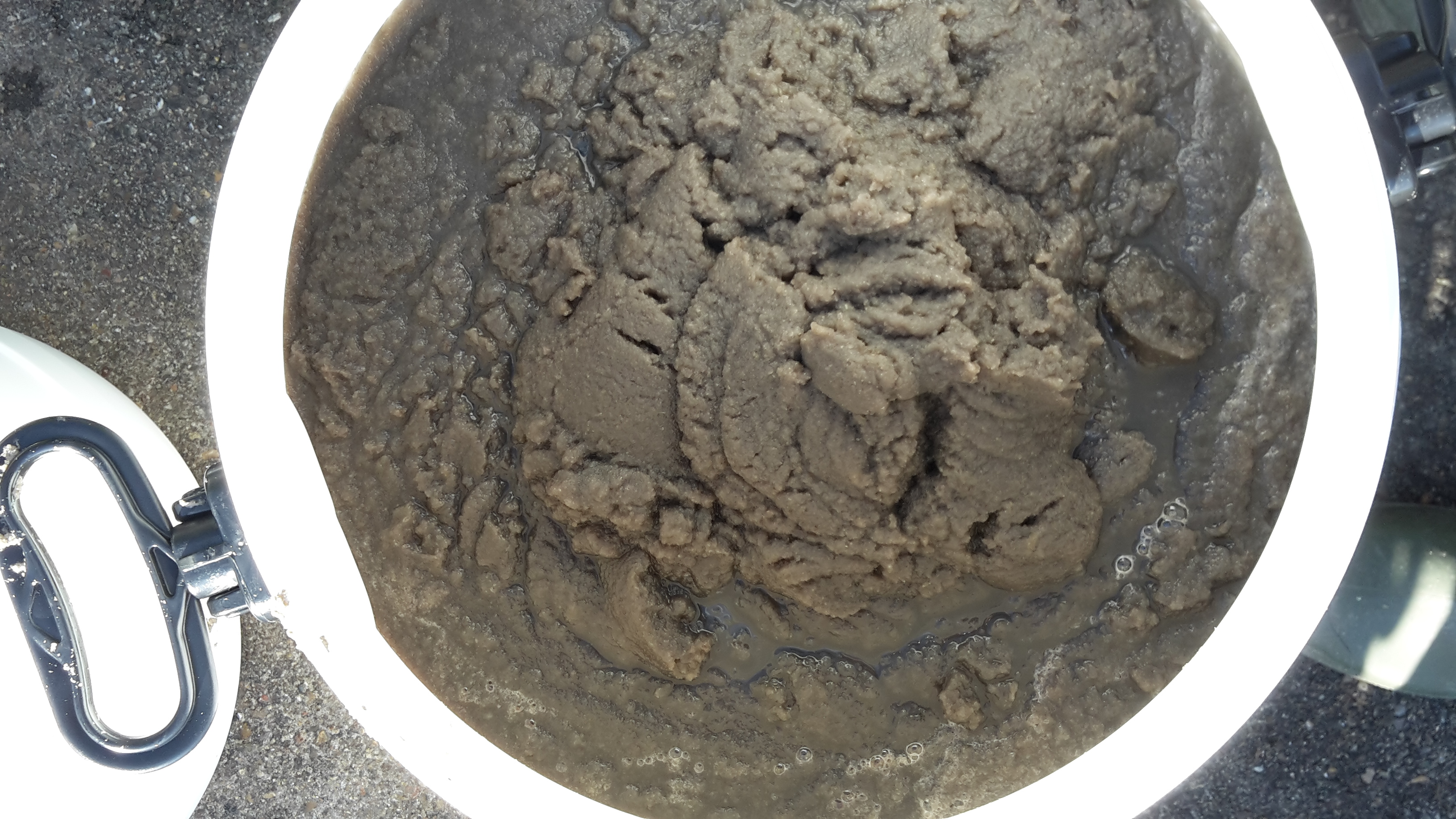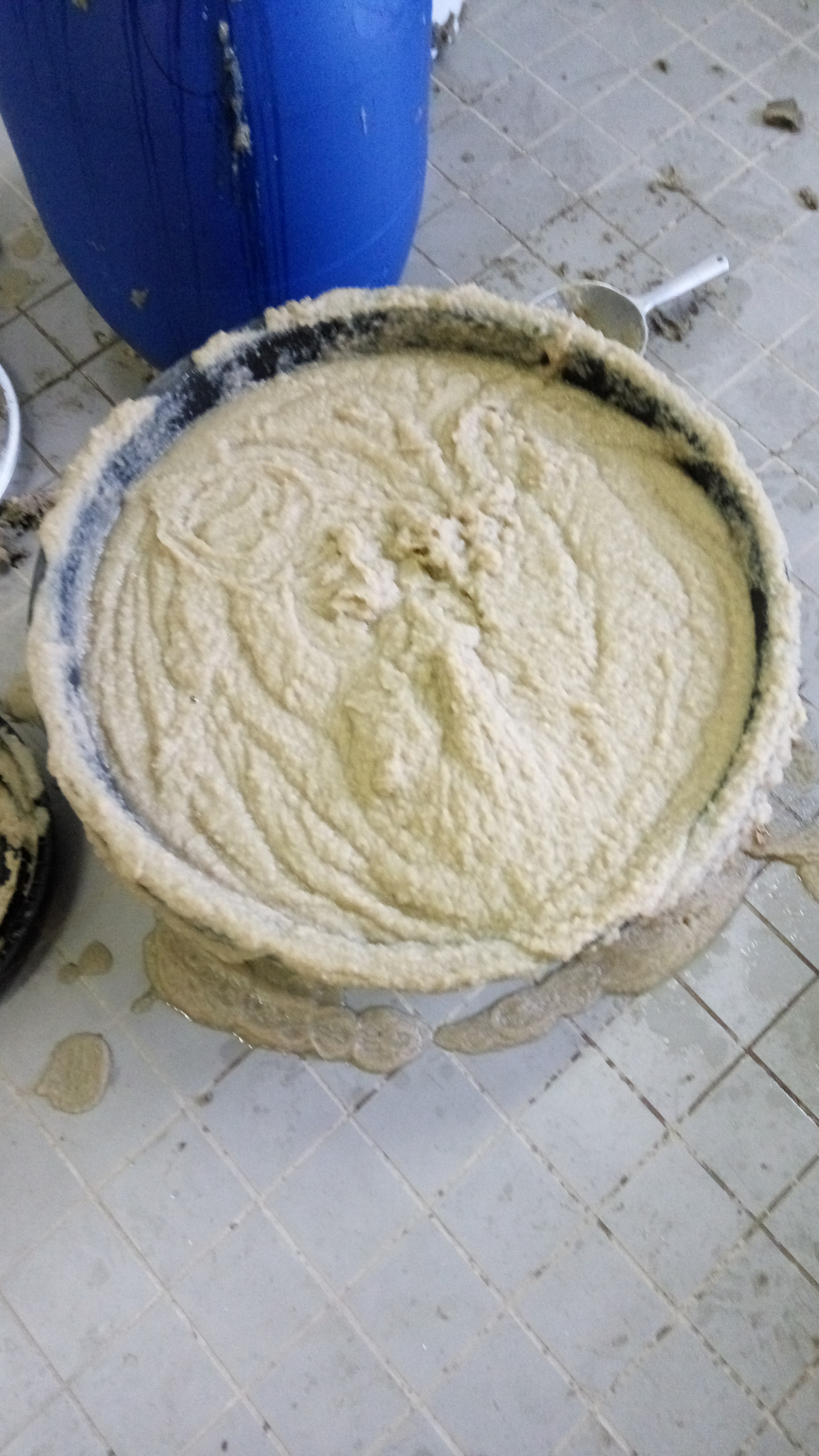LONG TERM STORAGE: SUGAR BEET AND / OR FERMENTABLE SUGARS
Block 1: AcidificationBlock 2: Storage tests
Acidification
Sugar beets are shredded into large chunks of 3 x 3 x 3 cm. In a “preliminary test” 600 liters of extraction liquid was generated by means of beet trimmings. This liquid has a pH of about 3.4 and a Brix of about 4%.
This liquid was then divided equally between two IBCs and the level of the IBCs was replenished to 500 L in each IBC. The pH of the starting solution is 3.4 and Brix is 2%. As expected, the effect of the dilution was reversed during the night. Some of the sugar present was still converted into lactic acid. After approximately 3 hours of extraction (the originally intended extraction time), the Brix value of the solution has increased from 2.0 to 3.8%. This is still a long way from the expected equilibrium value of approximately 8%. After an extraction time of 20 to 24 hours, the following key figures were measured for both IBCs: pH: 3.78 Brix: 7.7% T: 17ºC.
The tests with beet extract (from the IBCs) are based on a two-step process, in which ultrafiltration is used in a first step for the removal of proteins, enzymes and suspended matter. The permeate, consisting of sucrose, lactic acid and ions, is then treated in a second step with nanofiltration. The purpose of the second step is to remove ions and lactic acid while simultaneously concentrating sucrose. Finally the substance is concentrated to a syrup with a Brix of almost 32%. This concentration is also what is roughly “practically” possible. Thickening with membrane systems up to 30% syrup is relatively easy. Above 30%, both osmotic pressure and viscosity increase more than proportionally, leading to high pumping costs. In addition, the Brix of the permeate also increases (product loss). Further upgrading of this method should lead to the availability of this liquid for longer in order to be able to realize year-round production.
Storage tests
With the concept of “Direct Processing with Betaprocess”, sugar beets are converted by fermentation into high-quality molecules in one continuous operation. In this process, the sugar beet is mashed, heated to approximately 65 - 70oC, the cells are pulled apart under vacuum, causing the cell walls (cellulose and hemicellulose) to tear open and the cell contents (sugar and other ingredients) to be released. Fermentation converts sugars into valuable molecules such as ethanol.




Preservation of sugar content is important to be able to ferment sugar into these high-quality molecules all year round. Sugar beets are available for 6 months, from harvest in September to storage (frost protection) in February / March. From March, either different starting material must be used or better preserved sugar beets. It would be ideal to have a simple processing method available in which the ingredients of the sugar beets are retained in some way so that the same starting material - sugar - can be used for the remaining time. It is of course much more attractive to use the same starting material instead of a different biomass, which places its own specific requirements (and thus difficulties, extra investments, etc.) on the installation and the work process.
The storage technology was developed by the Danish company Green Solutions and may offer the solution. With this technology, the ingredients are safeguarded with a simple pH treatment - first to a high pH and then to a low pH. It has been developed for the storage of fodder beets as winter feed for livestock. They grind the fodder beets, add lye to pH 9-10 and, after one day, let the pH drop to pH 2 - pH3 by adding acid. The reason for going to pH2: this level is easier to maintain than high pH; if harmful bacteria are still active, they cause the pH to drop further, then they die or become inactive, the ingredients remain intact.
The question also remains whether the mash can be thickened in this relatively simple and inexpensive way. A factory with a daily capacity of 2,000 tons requires 14,000 tons of beet per week, which is equivalent to 14 million liters of beet mash. If the mash can be thickened to 60-70% sugar content, the volume shrinks to 3.5 million, resp. 2.2 million liters. A great reduction in storage volume, also saving in transport costs. Research and development into methods for thickening or separating the beet mash will be continued. Perhaps with Reverse Osmosis or filtration, evaporation seems too expensive, it requires too much energy. The cost aspect will be clearly included in the follow-up tests.
Since 2015 this project is financially supported through the 1) Eranet Bioenergy, 2) TKI BBEGR and 3) DEI scheme of the Dutch Ministry of Economic Affairs and Climate Policy.